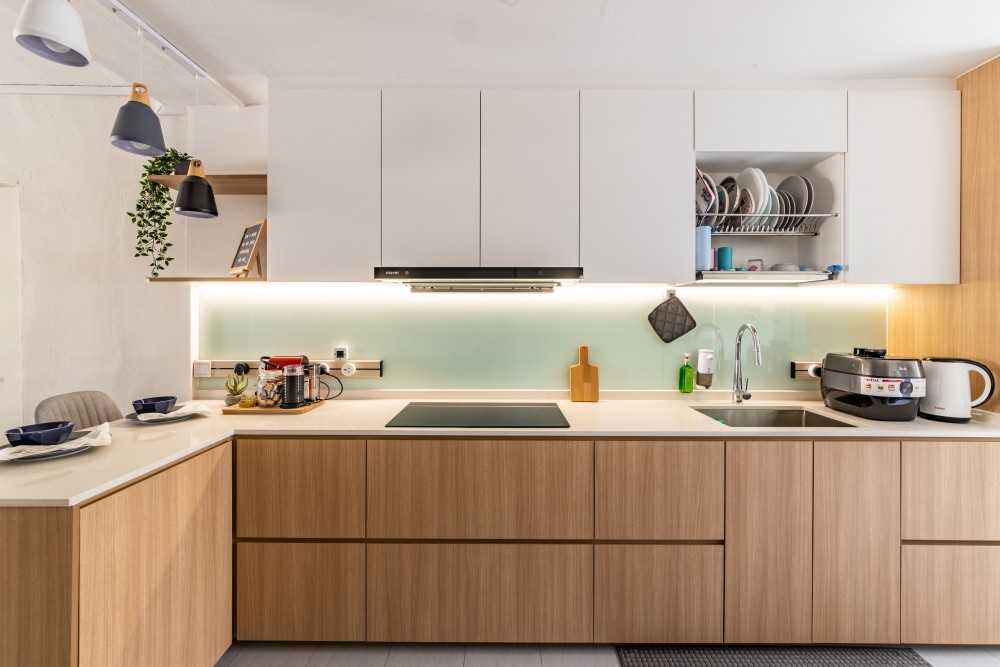Installing a kitchen hood is essential for maintaining good air quality in your home, especially in a compact space like a Singapore HDB flat or condo. A kitchen hood helps to remove smoke, grease, and odors, ensuring your kitchen remains clean and comfortable. However, installing a kitchen hood in Singapore involves understanding certain regulations and making the most of limited space. This guide will walk you through the key considerations you need to know before installing a kitchen hood in your home.
Why You Need a Kitchen Hood
A kitchen hood is crucial for:
- Removing Smoke and Odors: It prevents cooking smells from spreading throughout your home, particularly in open-concept layouts.
- Capturing Grease: It helps reduce grease buildup on kitchen surfaces, making cleaning easier and reducing fire hazards.
- Improving Air Quality: It vents out fumes, smoke, and airborne particles, keeping the air in your kitchen fresh and healthy.
Understanding Regulations for Kitchen Hoods in Singapore
Before installing a kitchen hood in your HDB flat or condo, it’s important to be aware of the relevant regulations and guidelines to ensure compliance.
1. HDB Guidelines
- Ducted Hoods: Installing a ducted hood in an HDB flat requires careful planning, as it involves venting air to the outside. According to HDB guidelines, you cannot make extensive modifications to the structural elements of the building, such as drilling through walls or making significant alterations to windows or exterior walls. This often limits the use of ducted hoods in HDBs.
- Ductless Hoods: Ductless hoods (also known as recirculating hoods) are more common in HDBs because they don’t require external venting. These hoods use filters to clean the air before recirculating it back into the kitchen, making them easier to install and compliant with HDB regulations.
2. Condo Regulations
- Management Approval: For condo owners, it’s crucial to check with your condominium’s management committee before installing a kitchen hood, particularly a ducted system. Some condos have specific guidelines or restrictions on exterior modifications, including the installation of vents.
- Ducted vs. Ductless: Similar to HDB flats, the choice between ducted and ductless hoods often depends on the building’s layout and the condo’s regulations. Ducted hoods may be allowed if there’s an existing duct system or provision for external venting.
3. Building Code Compliance
- Ensure that any electrical work associated with the installation of your kitchen hood complies with Singapore’s building codes. Engage a licensed contractor or electrician to handle the installation to ensure safety and compliance with local regulations.
Choosing the Right Kitchen Hood for Small Spaces
In Singapore, space is often at a premium, especially in HDB flats and condos. Choosing the right kitchen hood involves selecting a model that maximizes efficiency without taking up too much space.
1. Slimline or Telescopic Hoods
- These are ideal for small kitchens as they are compact and can be installed under cabinets. They extend out when in use and retract back when not needed, saving space while still providing effective ventilation.
2. Integrated or Built-In Hoods
- Integrated hoods are designed to be installed within your kitchen cabinetry, blending seamlessly with your kitchen design. They are perfect for homeowners who want a minimalist look without sacrificing functionality.
3. Wall-Mounted Hoods
- If you have a bit more wall space available, a wall-mounted hood can be a stylish and effective option. These hoods are powerful and come in various designs that can complement your kitchen decor.
4. Ductless (Recirculating) Hoods
- For most HDB flats and some condos, a ductless hood is the most practical solution. These hoods use filters to clean the air before recirculating it back into the kitchen. They are easier to install and maintain, especially in buildings where external venting isn’t possible.
Installation Tips for Small Kitchens
When installing a kitchen hood in a small space, consider the following tips to ensure it’s both effective and space-efficient:
1. Proper Placement
- The kitchen hood should be installed directly above your cooking area, typically 65-75 cm above the cooktop, depending on the model and manufacturer’s recommendations. This height ensures effective capture of smoke and odors while maintaining ease of use.
2. Ensure Adequate Ventilation
- If you’re installing a ducted hood, ensure the ducting is as straight and short as possible to maximize efficiency. For ductless hoods, make sure the filters are easily accessible for regular cleaning and replacement.
3. Consider Noise Levels
- In a small space, noise can quickly become an issue. Look for a hood with a noise level under 60 decibels to ensure it doesn’t disrupt the comfort of your home, especially in open-plan designs.
4. Lighting Integration
- Many kitchen hoods come with integrated lighting. This can be particularly useful in small kitchens where natural light may be limited, providing better visibility while cooking.
5. Maintenance
- Regular maintenance is key to keeping your kitchen hood working efficiently. For ductless hoods, this means cleaning or replacing the filters every few months, depending on how often you cook. Ducted hoods should have their ducts cleaned periodically to prevent grease buildup.
Conclusion
Installing a kitchen hood in your Singapore HDB flat or condo is essential for maintaining good air quality and a comfortable cooking environment. Understanding the regulations and making smart choices about space-saving models will help you find the right hood for your home. Whether you opt for a ducted or ductless system, ensure that it’s installed correctly and maintained regularly to keep your kitchen clean, fresh, and free of unwanted odors.


